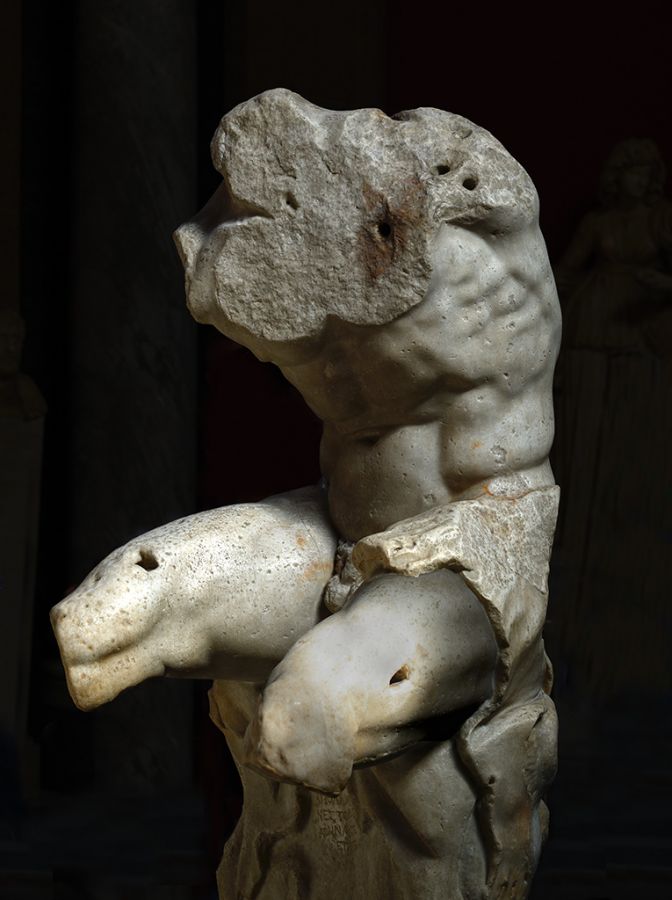Art & Exhibitions
The Vatican’s Belvedere Torso Headed to the British Museum
The statue is said to have inspired Michelangelo's "The Creation of Adam."

The statue is said to have inspired Michelangelo's "The Creation of Adam."

Sarah Cascone

Greece may be dragging its heels when it comes to approving loans of antiquities to London’s British Museum, but that hasn’t stopped the institution from scoring a major coup for its upcoming show “Defining Beauty: the Body in Ancient Greek Art.” Courtesy of the Vatican Museums, the famed Belvedere Torso will be making its way to the UK for the exhibition.
Thought by experts to be a depiction of the Greek hero and demigod Hercules, the Belvedere Torso dates to the 1st century BC, and is a Roman copy of an original work by the Athenian sculptor Apollonios. It will appear with a rare bronze to have survived from antiquity, a statue of an athlete that was discovered off the coast of Croatia in 1999.
The British Museum also hopes to include artwork from the Museum of Cycladic Art in Athens in the exhibition, but Greece, continuing to press for the restitution of the Parthenon marbles, seems disinclined to acquiesce to the request. The recent loan of the one of the contested statues to St. Petersburg’s Hermitage Museum was described by Greek prime minister Antonis Samaras as “an affront to the Greek people.”).
Neil MacGregor, the museum’s director, told the Guardian that the Greek institution had yet to make a decision regarding the loan, but that the British Museum still enjoyed an “extremely pleasant” relationship with “our colleagues in museums.”
While at the British museum, the Belvedere Torso will be displayed with Michelangelo’s sole extant study for the figure of Adam as he appears in The Creation of Adam painting on the Sistine Chapel ceiling. The Renaissance master turned to the classical statue as inspiration for his work.
“Michelangelo spoke about it as if it was a model,” British Museum senior curator of ancient Greek works Ian Jenkins told the Independent. “He talked about its extreme understanding of human physique, and at the same time he said there was a principle in it.
In an interview with the Independent, MacGregor called the sculpture “a loan of astonishing importance,” pointing out that “until the Parthenon sculptures came to London, that was the most important Greek body in Europe.”
Of course, Greece has recently been making a lot of noise in its efforts to have those important marbles, which Lord Elgin gave to the British Museum in 1816, returned to their native land.
Though visitors to the Vatican will certainly miss the opportunity to see the Belvedere Torso in person, the papal museums still offer plenty of cultural attractions. The Sistine Chapel, for instance, which has recently received a new state-of-the-art lighting system, now offers gay-themed tours and the chance to host your own party.
“Defining Beauty: the Body in Ancient Greek Art” will be on view at the British Museum, London, March 6–June 22.